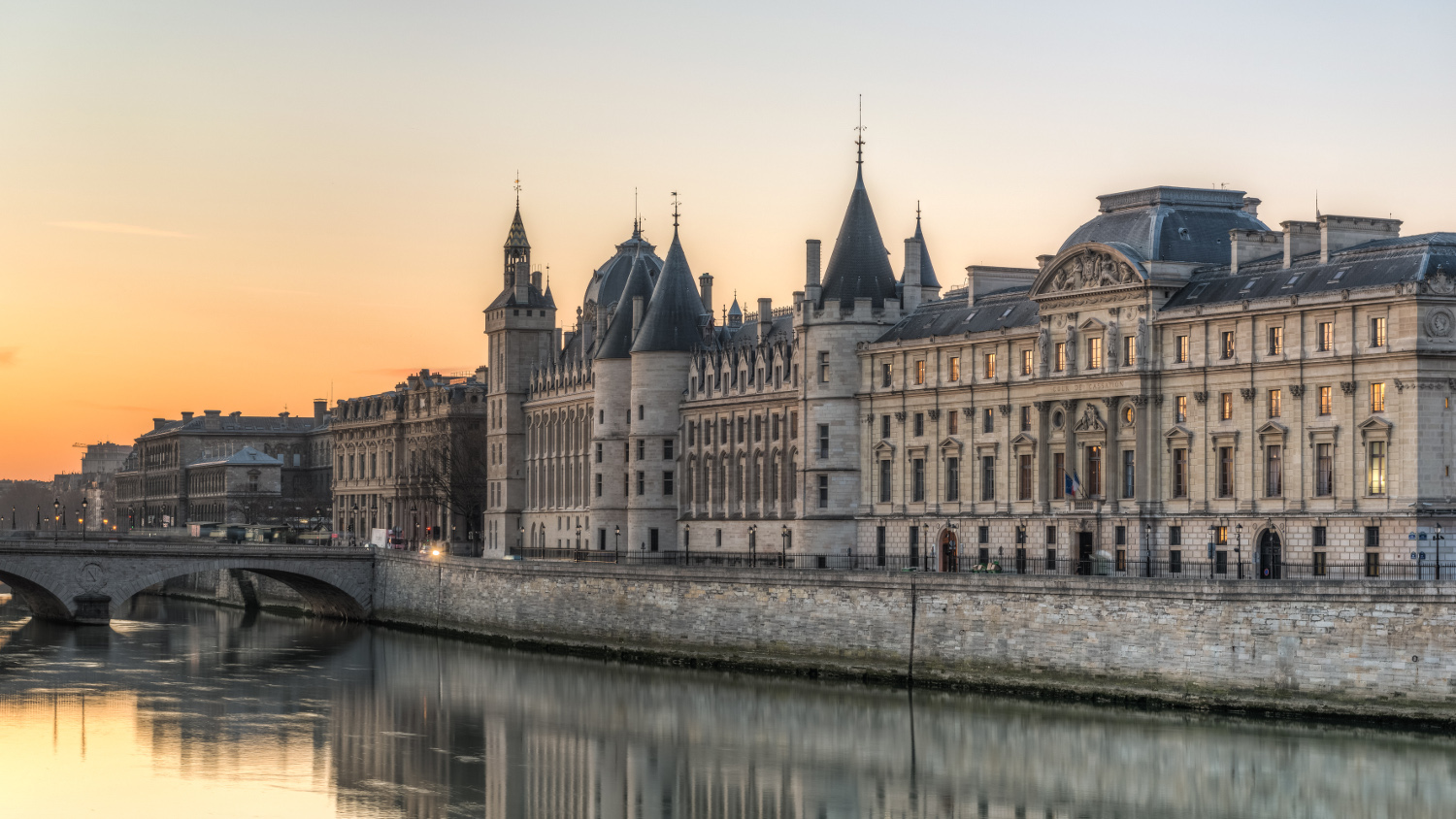
漢德百科全書 | 汉德百科全书
 历史
历史

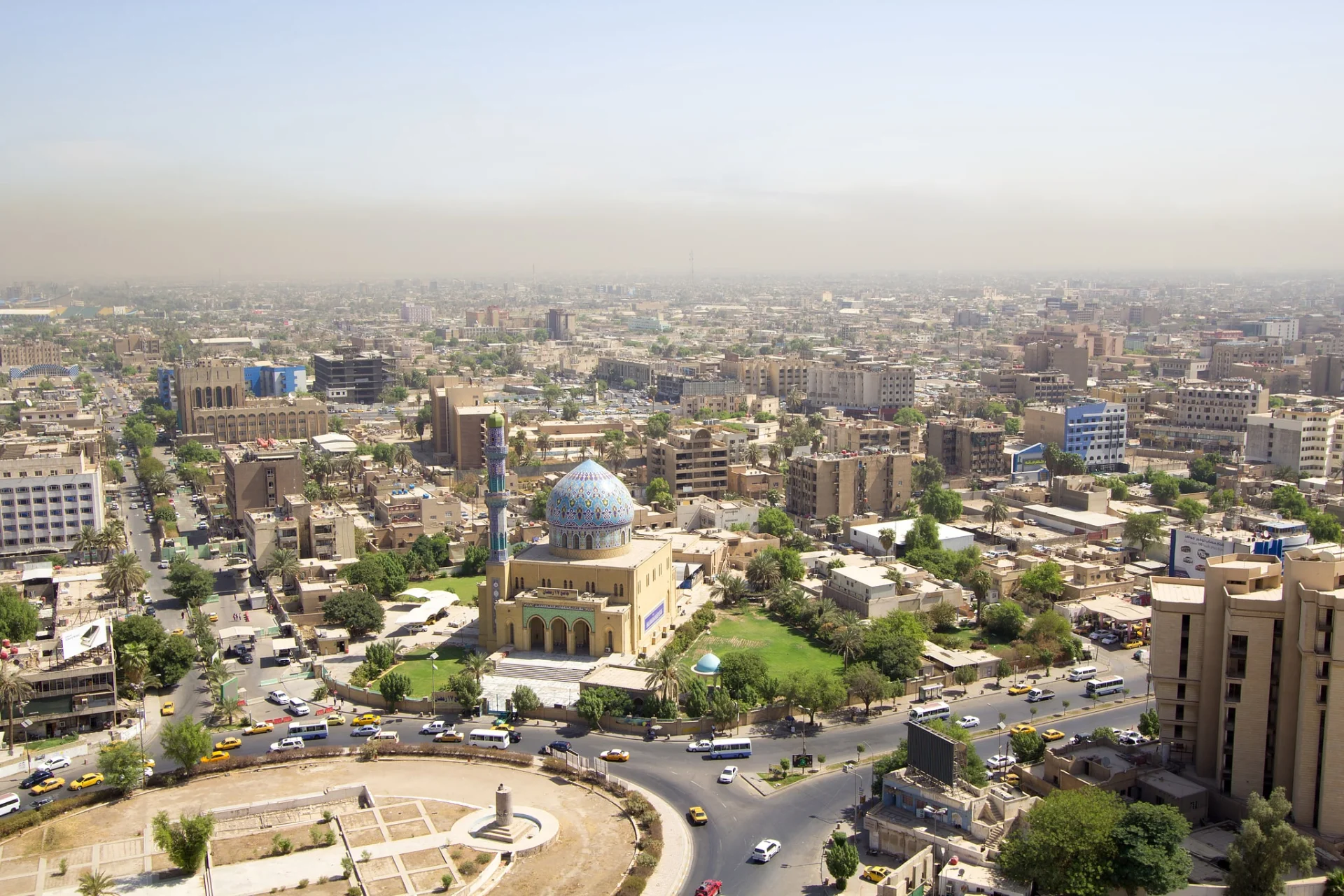
Bagdad (arabisch بغداد Baghdad, DMG Baġdād, kurdisch بەغدا Beẍda, von persisch „Geschenk des Herrn“ bzw. „Gottesgeschenk“, entsprechend baġ „Gott, Herr“ und dād „Gabe“)[1] ist die Hauptstadt des Iraks und des gleichnamigen Gouvernements. Sie ist mit ca. 6,7 Millionen Einwohnern (2018)[2] eine der größten Städte im Nahen Osten. In der Metropolregion, die weit über die Grenzen des Gouvernements hinausreicht, leben ca. 8,1 Millionen Menschen (2018), was knapp einem Viertel der Gesamtbevölkerung des Iraks entspricht.[2]
Die Stadt ist das politische, wirtschaftliche und kulturelle Zentrum des Landes sowie Sitz der irakischen Regierung, des Parlaments, aller staatlichen und religiösen Zentralbehörden sowie zahlreicher diplomatischer Vertretungen. Bagdad ist der bedeutendste Verkehrsknotenpunkt Iraks und besitzt zahlreiche Universitäten, Hochschulen, Theater, Museen sowie Baudenkmäler.
巴格达(阿拉伯语:بغداد,阿拉米语:ܒܓܕܐܕ),古称报达,《诸蕃志》称 白达,伊拉克首都,同时它也是伊拉克巴格达省的首府,为伊拉克最大城市及经济文化中心。位于美索不达米亚平原中部地区,底格里斯河流过巴格达市区,而距幼发拉底河约30千米[3]。巴格达人口约577万,在阿拉伯世界位于开罗之后列第二位。在历史上,巴格达曾是伊斯兰文明的政治、宗教、经济、商业、学术、交通中心。巴格达也是一座多民族多教派的城市。
阿拔斯王朝第二任哈里发曼苏尔于公元762年将阿拉伯帝国都城迁至此地。当时成为阿拉伯世界的政治、经济、宗教中心。[3]
10世纪后,因政治变动及战争而衰退[3]。随着阿拉伯王朝不复昔日光辉,巴格达先于1258年被蒙古人攻陷;1508年和1534年分别被波斯和土耳其人占领。1638年后巴格达长期受土耳其人的统治。1917年巴格达落入英军之手。直到1921年伊拉克独立后,巴格达被定为首都。巴格达位于美索不达米亚平原中部地区,底格里斯河流过巴格达市区,而距幼发拉底河约30千米,为两河相距最近之处;迪亚拉河流经城市郊区,并于巴格达东南方注入底格里斯河。
バグダード(アラビア語: بغداد/ラテン文字表記: Baghdad, Baġdād)は、イラクの首都で同国最大の都市。また、バグダード県の県庁所在地でもある。アッバース朝によって建設された古都であり、イスラム世界における主要都市の1つ。2020年の人口はおよそ714.4万人[1]。日本語では多くの場合バグダッドと表記されるが、アラビア語の綴りと発音([bæɣˈdæːd])に近づけるとバグダードという表記になる。
Baghdad (/ˈbæɡdæd, bəɡˈdæd/; Arabic: بَغْدَاد [baɣˈdaːd] ( listen)) is the capital of Iraq and the second-largest city in the Arab world after Cairo. It is located on the Tigris near the ruins of the ancient Akkadian city of Babylon and the Sassanid Persian capital of Ctesiphon. In 762 CE, Baghdad was chosen as the capital of the Abbasid Caliphate, and became its most notable major development project. Within a short time, the city evolved into a significant cultural, commercial, and intellectual center of the Muslim world. This, in addition to housing several key academic institutions, including the House of Wisdom, as well as a multiethnic and multi-religious environment, garnered it a worldwide reputation as the "Center of Learning".
listen)) is the capital of Iraq and the second-largest city in the Arab world after Cairo. It is located on the Tigris near the ruins of the ancient Akkadian city of Babylon and the Sassanid Persian capital of Ctesiphon. In 762 CE, Baghdad was chosen as the capital of the Abbasid Caliphate, and became its most notable major development project. Within a short time, the city evolved into a significant cultural, commercial, and intellectual center of the Muslim world. This, in addition to housing several key academic institutions, including the House of Wisdom, as well as a multiethnic and multi-religious environment, garnered it a worldwide reputation as the "Center of Learning".
Baghdad was the largest city in the world for much of the Abbasid era during the Islamic Golden Age, peaking at a population of more than a million.[3] The city was largely destroyed at the hands of the Mongol Empire in 1258, resulting in a decline that would linger through many centuries due to frequent plagues and multiple successive empires. With the recognition of Iraq as an independent state (formerly the British Mandate of Mesopotamia) in 1932, Baghdad gradually regained some of its former prominence as a significant center of Arab culture, with a population variously estimated at 6 or over 7 million.[note 1] Compared to its large population, it has a small area at just 673 square kilometers (260 sq mi).
The city has faced severe infrastructural damage due to the Iraq War, which began with the United States-led invasion of Iraq in 2003 and lasted until 2011, and the subsequent insurgency and renewed war that lasted until 2017, resulting in a substantial loss of cultural heritage and historical artifacts. During this period, Baghdad had one of the highest rates of terrorist attacks in the world. However, terrorist attacks are rare and have been declining since the territorial defeat of the Islamic State militant group in Iraq in 2017.
Bagdad ou Baghdad (en arabe : بغداد, baġdād, /baɣˈdaːd/ Écouter) est la capitale de l’Irak et de la province de Bagdad. Située au centre-est du pays, elle est traversée par le fleuve Tigre. Ses habitants sont appelés « Bagdadiens »1.
Avec une aire urbaine comprenant une population estimée à 10 millions d’habitants en 2012, c’est la plus grande ville d’Irak, ainsi que la deuxième ville la plus peuplée du monde arabe et du Moyen-Orient (derrière Le Caire, la capitale de l'Égypte). C'est un carrefour de communications aériennes, routières et ferroviaires d'une grande importance stratégique pour la république d'Irak.
Les origines de la ville actuelle remontent, au moins, au viiie siècle, avec, probablement, la présence de plusieurs petits foyers d'habitat antérieurs datant de la période préislamique. Elle fut la capitale de l'Empire abbasside à partir du viiie siècle et un centre de culture et de connaissance très important pendant des siècles, jusqu’au milieu du xiiie siècle. Bagdad a été, de 2003 à 2011, le centre d’un violent conflit en raison de la guerre d’Irak. Elle est devenue une ville d'enclaves fortifiées régies par les soldats de l'armée irakienne, les officiers de la police fédérale, les agents de police locaux et les agents de sécurité privés.
Baghdad (in arabo: بغداد, Baghdād, in età abbaside Madīnat al-Salām, "Città della pace", in italiano antico Baldacco, Baldacca o Baudac), o Bagdad[4], è la capitale dell'Iraq e dell'omonima provincia. È la seconda città più grande dell'Asia sud-occidentale, dopo Teheran: il calcolo della popolazione per il 2014 è di 7 665 292 abitanti[3]. Situata sul fiume Tigri a 33°20 nord e 44°26 est.
Bagdad3 (en árabe: بَغْدَاد Baġdād, en arameo: ܒܓܕܕ Baghdad) es la capital y la ciudad más poblada de Irak. Su número de habitantes es de 8 765 000 (est. 2016), lo que la convierte en la mayor ciudad del país y la segunda del mundo árabe, solo por detrás de El Cairo.
Ubicada a orillas del río Tigris, la ciudad fue fundada en el siglo viii y se convirtió en capital del Califato abasí. En poco tiempo se convirtió en un centro cultural, comercial e intelectual de gran relevancia del mundo islámico. Esto, y el hecho de ser sede de varias instituciones académicas relevantes, como la Casa de la sabiduría, le sirvieron a la ciudad para ganarse una reputación mundial de «Centro de Enseñanza».
Bagdad fue la ciudad más grande de la Edad Media durante gran parte del Califato abasí, cuando alcanzó un pico de un millón y medio de habitantes.4 Sin embargo, la urbe fue en gran parte destruida por las tropas del Imperio mongol en 1258, lo que resultó en un declive que se prolongaría por muchos siglos debido a frecuentes epidemias y la sucesión de varios imperios que dominaron la ciudad. Con el reconocimiento de Irak como estado independiente en 1938 tras la desaparición del Mandato Británico para Mesopotamia, Bagdad recuperó gradualmente parte de su pasada preeminencia como centro significante de la cultura musulmana.
En tiempos recientes la ciudad ha sufrido graves daños en sus infraestructuras, especialmente durante la invasión de Irak de 2003 y la consiguiente guerra de Irak que duró hasta diciembre de 2011. En los últimos años la capital ha sido objetivo de numerosos ataques de la guerrilla iraquí. Este conflicto militar también ha provocado una pérdida profunda e irreparable de la herencia cultural y de piezas históricas. Como resultado, Bagdad está considerado uno de los lugares menos hospitalarios del mundo en los que vivir y ofrece una calidad de vida muy baja.
Багда́д (араб. بغداد — «божий дар») — столица Ирака, административный центр мухафазы Багдад. С населением более 9 млн человек (2015)[3] он является одним из самых больших городов Ближнего Востока.
Багдад — политический, экономический и культурный центр Ирака. В нём находятся правительство, все центральные государственные и религиозные учреждения и множество дипломатических представительств. Город — важный транспортный узел. В нём также расположены многочисленные вузы, театры, музеи и памятники архитектуры.

1258年2月10日,蒙古人征服了巴格达,旭烈兀领导的蒙古人征服并摧毁了阿拔斯王朝哈里发的首都。旭烈兀的目标是将中东置于蒙古帝国的牢固控制之下,尽管哈里发本被认定为附庸[8],但因拒绝以其身份表态服从以及无意进贡军事支援,因此旭烈兀按照大汗蒙哥的命令消除阿拔斯王朝。
在围攻和占领之后,巴格达被彻底摧毁,平民伤亡估计在10万到100万人间。整座城市被洗劫一空并被烧毁,文化财产和图书馆被毁。日后在河中发现了一些破坏的遗迹。结果,巴格达在接下来很长一段时间内变成一个不重要的地方;蒙古人占领这座城市被视为伊斯兰黄金时代的终结。
Die mongolische Eroberung Bagdads fand am 10. Februar 1258 statt. Die Mongolen unter Hülegü eroberten und zerstörten die Hauptstadt der abbasidischen Kalifen. Hülegüs Ziel war es, den Nahen Osten unter die feste Kontrolle des Mongolenreiches zu bringen. Der Kalif sollte dabei eigentlich als Vasall dienen,[6] doch aufgrund seiner Verweigerung der Gefolgschaft sollte Hülegü auf Befehl des Großkhans Möngke die Abbasiden beseitigen.
Nach der Belagerung und Einnahme war Bagdad total zerstört. Schätzungen der zivilen Opfer reichen von 100.000 bis eine Million. Die Stadt wurde geplündert und niedergebrannt. Kulturgüter und Bibliotheken wurden zerstört. Überreste der Zerstörungen fanden sich teilweise im Fluss wieder. Im Ergebnis wurde Bagdad für lange Zeit bedeutungslos und die Einnahme der Stadt wurde als der Endpunkt der Blütezeit des Islam angesehen.

Baku (aserbaidschanisch Bakı / باکی; russisch Баку́ Baku) ist die Hauptstadt Aserbaidschans. Mit zwei Millionen Einwohnern in der Stadtprovinz ist Baku die bevölkerungsreichste und flächengrößte Stadt des Landes und des gesamten Kaukasus. Die Stadt an der Küste des Kaspischen Meeres ist Verkehrsknotenpunkt sowie Wirtschafts- und Kulturzentrum mit mehreren Universitäten, Hochschulen, Forschungsinstituten, Theatern und Museen. Durch die Lage innerhalb eines Erdölfördergebiets ist Baku der Knotenpunkt mehrerer Erdölleitungen und besitzt einen bedeutenden Erdölhafen. Baku kann aufgrund seiner günstigen Lage an mehreren historischen Handelswegen auf eine reiche Stadtgeschichte zurückblicken. In der Altstadt, die seit 2000 den Status eines UNESCO-Welterbes hat, sind zahlreiche Paläste, Moscheen und Festungsbauten erhalten geblieben.
巴库(Baku, Баку)是阿塞拜疆首都和全国经济、文化中心。里海最大港口。位于阿普歇伦米岛南部,是石油工业中心,有“石油城”之誉。也是前苏联外高加索最大城市。 巴库由10个行政区和46个城镇组成,面积2200平方公里。人口182.88万。1月平均气温为4℃,7月平均气温为27.3℃。 在18世纪,巴库为巴库汗国都城。19世纪70年代开始工业性采油,19世纪末成为外高加索工业中心和石油基地,有22大炼油基地,其他工业多与石油有 关。1991年8月成为独立后阿塞拜疆的首都。城市西部的比比埃巴特区为老采油区。东部的基什雷区和邵武勉区为重要工业区。石油是巴库的经济命脉。石油开 采正向深处和外围海域发展。以石油、天然气开采和石油加工为主要工业,还有石油机械、电力和轻工 、食品工业。外高加索主要铁路枢纽,铁路通罗斯托夫、第比利斯和埃里温。有输油管道通黑海港口巴统。巴库是里海航运中心,可泊中等吨位船舶。城市中部为行 政、文化和居住区。建有科学院,大学和博物馆。里海最大港口,有“石油城”之誉。市内建有地铁,有阿塞拜疆科学学院、阿塞拜疆大学、石油化工学院等多所高 等院校。城市的中部是行政、文化区域,有历史博物馆和艺术博物馆。老城区以旧要塞为中心。 巴库是一座有着悠久历史的古城,城内有众多名胜古迹,如11世纪建造的瑟纳克一卡尔清真寺塔,12世纪的克孜一卡拉瑟塔楼,13世纪的巴伊洛夫石堡,15 世纪的希尔凡王宫及17世纪的汗王宫殿至今保存完好。2000年联合国教科文组织将巴库墙城及城内的希尔梵国王宫殿和少女塔作为文化遗产,列入《世界遗产 名录》。(Quelle:http://you.kuxun.cn)
巴库(阿塞拜疆语:Bakı,[bɑˈcɯ] (ⓘ))是阿塞拜疆的首都、经济文化中心。巴库同时也是里海最大港口,外高加索最大城市[4]。它的海拔是低于海平面28米(92英尺) ,使它成为世界上海拔最低的首都以及低于海平面的最大城市。面积2192平方公里,人口300万(2008年计算)[5]。巴库全市分为内城和新城两部分(亦有将苏联时期兴建区域分别划分的)。
在2007年,伊斯兰会议组织文化部长宣布巴库为2009年伊斯兰文化中心。为2015年第一届欧洲运动会主办国。巴库曾先后申办2016年夏季奥运会和2020年夏季奥运会,但皆因基础设施不完备没有入围。不过由于阿塞拜疆歌手艾尔与妮基在2011年欧洲歌唱大赛获得冠军,终使巴库获得举办2012年欧洲歌唱大赛的机会。
バクー(Baku)は、アゼルバイジャン共和国の首都。カスピ海西岸に突き出したアブシェロン半島南岸に位置し、市街はバクー湾に面するように広がった港町である。行政的には11の行政区、48の町区に分割されており、2005年時点の総人口は2,045,815人[1]。アゼルバイジャン最大の都市であると同時に、南カフカース地域でも有数の大都市である。大規模な油田(バクー油田)をもち、帝政ロシア時代から石油の生産地として発展してきた。
日本語名のバクーはキリル文字綴りによるロシア語綴り・アゼルバイジャン語(アゼリー語)旧綴り Баку (Baku) に基づくが、アゼルバイジャン語の発音では母音の前で子音 k が軟音化するためカタカナ表記するならば「バキュ」に近く、現在アゼルバイジャンで使われているアゼルバイジャン語のラテン文字正書法では Bakı と綴る。バクーという名前の由来には諸説あるが、最も一般的なものは、ペルシャ語で「風が吹きつけた」という意味の "bād-kūbe"(バード・クーベ)から来ているとする説が一般的である。
気候は晴天が多く、乾燥している。寒気と暖気がぶつかることで起きる強風が時折吹き付け、先述した語源の根拠となっている。海岸は美しく、市街近郊には温泉や鉱泉がある。
市街の中心はその南西部にあり、イチェリ・シェヘル (İçəri Şəhər) すなわち「内城」と呼ばれる城壁に囲まれた旧市街と、帝政ロシア時代にその周囲に築かれた新市街とに分かれる。その周囲、北から東にかけての平地から丘陵の斜面一帯にソビエト連邦時代につくられた市街が広がっている。近年は豊富なオイルマネーをもとに近未来的な巨大建築物が出現し、「第二のドバイ」「第二のシンガポール」とも呼ばれている[2]。
Baku (/bəˈkuː/ bə-KOO, /ˈbɑːkuː/ BAH-koo; Azerbaijani: Bakı, IPA: [bɑˈcɯ]) is the capital and largest city of Azerbaijan, as well as the largest city on the Caspian Sea and of the Caucasus region, with a population of 2,262,600 (January 1, 2018). Baku is located 28 metres (92 ft) below sea level, which makes it the lowest lying national capital in the world and also the largest city in the world located below sea level. It is located on the southern shore of the Absheron Peninsula, alongside the Bay of Baku. At the beginning of 2009, Baku's urban population was estimated at just over two million people.[5] Officially, about 25 percent of all inhabitants of the country live in Baku's metropolitan area. Baku is the sole metropolis in Azerbaijan.
Baku is divided into twelve administrative districts (raions) and 48 townships. Among these are the townships on the islands of the Baku Archipelago, and the town of Oil Rocks built on stilts in the Caspian Sea, 60 kilometres (37 miles) away from Baku. The Inner City of Baku, along with the Shirvanshah's Palace and Maiden Tower, were inscribed as a UNESCO World Heritage Site in 2000. According to the Lonely Planet's ranking, Baku is also among the world's top ten destinations for urban nightlife.[6]
The city is the scientific, cultural, and industrial center of Azerbaijan. Many sizeable Azerbaijani institutions have their headquarters there. The Baku International Sea Trade Port is capable of handling two million tons of general and dry bulk cargoes per year.[7] In recent years, Baku has become an important venue for international events. It hosted the 57th Eurovision Song Contest in 2012, the 2015 European Games, 4th Islamic Solidarity Games, the F1 Azerbaijan Grand Prix since 2016, and will host UEFA Euro 2020. The city is bidding for Expo 2025 against Yekaterinburg, Russia and Osaka, Japan.
La ville de Bakou (azéri : Bakı, IPA: [bɑˈcɯ]) est la capitale de l'Azerbaïdjan. Elle se trouve dans l'est du pays, sur la rive sud de la péninsule d'Abşeron, au bord de la mer Caspienne. Son histoire débute au Ier millénaire avant Jésus-Christ, mais les traces écrites les plus anciennes ne datent que du Ve siècle.
En 2011, sa population est estimée à 2 045 815 habitants1 et 3 millions de personnes environ vivent dans l'agglomération.
Baku (pron. bakù[2]; in azero: Bakı?; in russo: Баку?), conosciuta anche come Baqy, Baky o Baki, in italiano Bacù[2], è la capitale, la più grande città e il più grande porto dell'Azerbaigian e di tutto il Caucaso.
È considerata una delle più antiche e più grandi città dell'Oriente. Situata sulla costa meridionale della penisola di Abşeron, la città si compone di tre parti principali: il centro, la vecchia Città Murata estesa sul territorio di 21,5 ettari e la parte della città costruita nell'epoca sovietica. La sua popolazione nel 2014 era stimata in 2.122.300 di abitanti.
Bakú (en azerí, Bakı, [bɑˈkɯ]) es la capital y ciudad más poblada de Azerbaiyán, del mar Caspio y del Cáucaso. Está situada en la costa sur de la península de Absheron, que se proyecta en el Caspio. La ciudad se compone de dos partes principales: el centro y la ciudad vieja interior. En enero de 2018 Bakú tenía una población de 2.262.600 habitantes,3 de los cuales 153.400 eran desplazados internos y 143.400 refugiados de la guerra de Nagorno Karabaj.
Bakú se divide en once distritos administrativos (raiones) y 48 municipios. Entre estos se encuentran los municipios de las islas de la bahía de Bakú y Neft Daşları construidas sobre pilotes en el mar Caspio, a 60 km de Bakú. El centro urbano de la ciudad, con el Palacio de los Shirvanshah y la Torre de la Doncella, fue inscrito por la Unesco como Patrimonio de la Humanidad en 2000. De acuerdo con la clasificación de Lonely Planet, Bakú también se encuentra entre los diez mejores destinos de vida nocturna urbana del mundo.4
La ciudad fue uno de los mayores centros petrolíferos de la antigua Unión Soviética y actualmente es el centro científico, cultural e industrial de Azerbaiyán. Muchas instituciones importantes de Azerbaiyán tienen su sede allí, incluyendo SOCAR, una de las cien principales empresas del mundo, entre otras.5 El Puerto de Comercio Marítimo Internacional de Bakú, protegido por las islas del archipiélago Bakú hacia el este y la península de Absheron al norte, es capaz de transportar dos millones de toneladas de carga general y seca a granel por año.6 La ciudad acogió el 57.º Festival de Eurovisión en 2012 y fue la sede de los Juegos Europeos 2015, es la sede del Gran Premio de Azerbaiyán de Fórmula 1 desde 2016 y será la sede del Campeonato Mundial de Ciclismo BMX en 2018 y de la EURO 2020.7
Баку́ (азерб. Bakı, МФА (азерб.): [bɑˈcɯ]) — столица Азербайджанской Республики, крупнейший промышленный, экономический и научно-технический центр Закавказья, а также самый крупный порт на Каспийском море и самый большой город на Кавказе[9][10].
Площадь территории, которая административно управляется Баку, составляет 2150 км²[1]; население данной территории — 2 181,8 тыс. жителей (на 1 января 2014 года). Баку расположен на южном берегу Апшеронского полуострова. Город по своей древности, величине территории и численности населения является одним из старинных и крупнейших городов Востока. Население всего Апшеронского полуострова (Бакинской агломерации) составляет 2 673,7 тыс. жителей[7]. Баку удостоен в 2010 году Программой ООН по окружающей среде (UNEP) звания одного из главных городов по проведению Всемирного дня окружающей среды. Подобные города избираются ежегодно. В 2010 году, наряду с Баку, этих званий были удостоены также Генуя (Италия) и Женева (Швейцария)[11].

Als Tripel-Allianz-Krieg (spanisch Guerra de la Triple Alianza) wird der von 1864 bis 1870 dauernde Kampf Paraguays gegen die verbündeten Staaten Argentinien, Brasilien und Uruguay bezeichnet. Dabei stand Paraguay zunächst auf der Seite der konservativen Regierung Uruguays, die im Uruguayischen Krieg mit Brasiliens Unterstützung 1865 gestürzt wurde.
Der Krieg endete mit der völligen Niederlage Paraguays und gilt als der blutigste Konflikt in der lateinamerikanischen Geschichte. Nach sechs Jahren Krieg war Paraguay nahezu entvölkert: 60 bis 80 Prozent der Bewohner des Landes waren im Kampf, durch Hunger oder Seuchen umgekommen. In Europa blieb der Krieg weitgehend unbeachtet.[1][2]
In Paraguay wird er auch „Großer Krieg“ (Guerra Grande) oder „Krieg gegen die Tripelallianz“ (Guerra contra la Triple Alianza) genannt, in Argentinien, Brasilien und Uruguay „Paraguayischer Krieg“ (port. Guerra do Paraguai; span. Guerra del Paraguay).

 建筑艺术
建筑艺术
 欧洲流行歌曲大赛
欧洲流行歌曲大赛
 1998年世界杯足球赛
1998年世界杯足球赛

 财政金融
财政金融
 ***全球金融中心
***全球金融中心
 法国
法国
 欧洲足球锦标赛 2016
欧洲足球锦标赛 2016
 2019年女子世界杯足球赛
2019年女子世界杯足球赛

 历史
历史
 公元 2000 - 2100
公元 2000 - 2100

 法兰西岛
法兰西岛

 国际城市
国际城市
 *欧洲文化之都
*欧洲文化之都

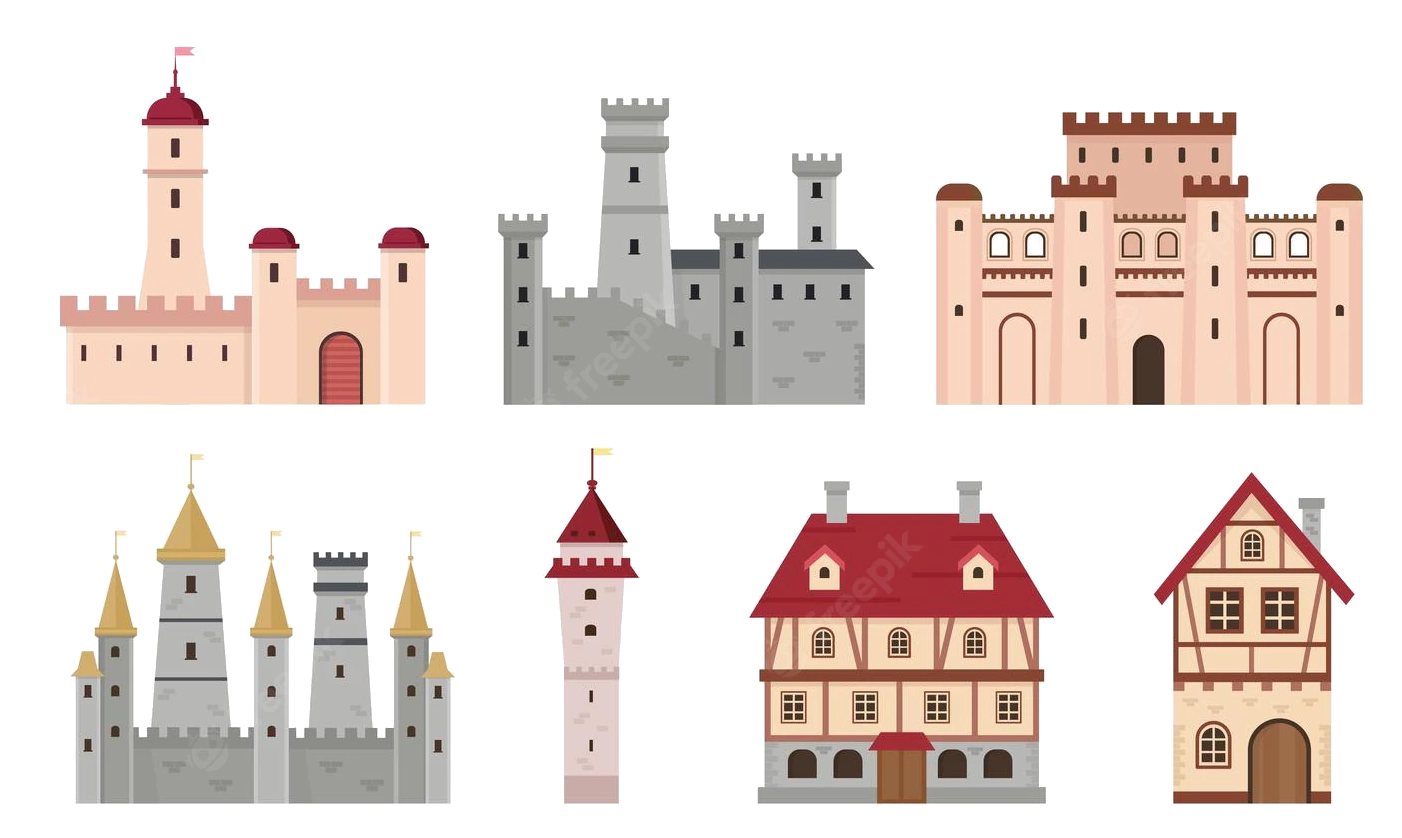 欧洲中世纪城市
欧洲中世纪城市
 夏季奥林匹克运动会
夏季奥林匹克运动会

 2024夏季奥林匹克运动会
2024夏季奥林匹克运动会
 丝绸之路
丝绸之路
 塞纳河
塞纳河

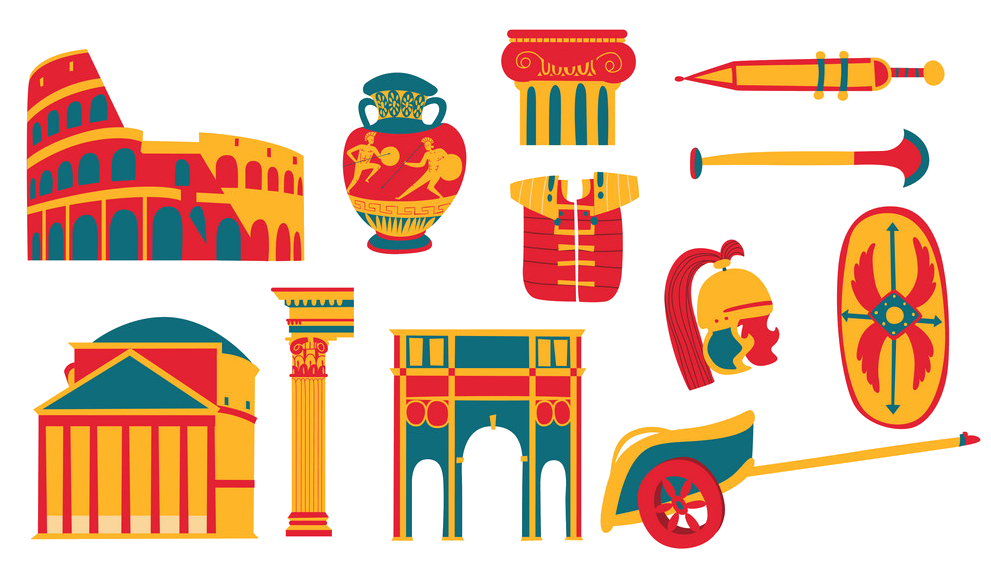 罗马人建立的城市
罗马人建立的城市

Paris (französisch [paˈʁi]) ist die Hauptstadt der Französischen Republik und Hauptort der Region Île-de-France. Der Fluss Seine teilt die Stadt in einen nördlichen (Rive Droite, „rechtes Ufer“) und einen südlichen Teil (Rive Gauche, „linkes Ufer“); administrativ ist sie in 20 Stadtbezirke (Arrondissements) unterteilt. Mit mehr als 2,2 Millionen Einwohnern ist Paris die fünftgrößte Stadt der Europäischen Union sowie mit über 12,5 Millionen Menschen nach London die zweitgrößte Metropolregion der EU.[1][2][3][4] Mit einer vergleichsweise kleinen Stadtfläche von nur 105 Quadratkilometern ist Paris mit rund 21.000 Einwohnern pro Quadratkilometer die am dichtesten besiedelte Großstadt Europas.
Paris ist das überragende politische, wirtschaftliche sowie kulturelle Zentrum des zentralistisch organisierten Frankreichs und mit drei Flughäfen und sechs Kopfbahnhöfen dessen größter Verkehrsknotenpunkt. Teile des Seine-Ufers zählen heute zum UNESCO-Welterbe. Die Stadt ist Sitz der UNESCO und darüber hinaus der OECD und der ICC. Sehenswürdigkeiten wie der Eiffelturm, die Kathedrale Notre-Dame oder der Louvre machen die Stadt zu einem beliebten Touristenziel. Mit rund 16 Millionen ausländischen Touristen pro Jahr ist die Stadt hinter London und Bangkok eine der meistbesuchten Städte weltweit.[5] Der Großraum Paris (Île-de-France) verzeichnet jährlich über 47 Millionen Gäste aus dem In- und Ausland und mehr als 184 Millionen Übernachtungen.[6]
Das heutige Paris entwickelte sich seit dem 3. Jahrhundert aus der keltischen Siedlung „Lutetia“ auf der Île de la Cité. Später errichteten die Römer an der Seine eine Stadt, die im 6. Jahrhundert zunächst eine Hauptresidenz des Fränkischen Reiches wurde. Eine Blütezeit der Kunst und Kultur erlebte Paris im 16. Jahrhundert unter Franz I. Durch den Absolutismus, insbesondere unter Ludwig XIV. im 17. Jahrhundert, wurde die Stadt um zahlreiche barocke Gebäude und Prachtstraßen bereichert und so zu einem beispielhaften Muster für barocken Städtebau. Obwohl die Königsresidenz 1682 nach Versailles verlegt wurde, blieb sie aufgrund ihrer politischen und wirtschaftlichen Bedeutung das Zentrum des Landes. In der Französischen Revolution kam ihr ab 1789 eine welthistorische Bedeutung zu. Die Industrialisierung führte im 19. Jahrhundert zu einem enormen Bevölkerungszuwachs, sodass 1846 erstmals die Grenze von einer Million Einwohnern überschritten wurde. In den folgenden Jahrzehnten bekam die Stadt durch die sogenannte Belle Époque und sechs Weltausstellungen weltweite Beachtung. Heute ist sie Hauptort der französischsprachigen und eine der wichtigsten Städte der westlichen Welt.
巴黎市(法语:Paris)是法国的首都和最大城市,也是法国的政治与文化中心。其隶属法兰西岛大区之下的巴黎省(编号第75省;仅辖有1个同名的省区与市镇),也是法兰西岛大区的核心。目前所谓的巴黎市辖区范围大至仅为旧巴黎城墙内(环城道路内侧),并未包含巴黎扩张发展的大巴黎实际都市区域,巴黎市辖区内依照发展历史共分成20个区,,自从1860年代开始就没有重大变化。截至2009年为止,巴黎市内人口超过223万[1] ,巴黎都会区的人口逾1,200万[2] ,是欧洲最大的都会区之一[3]。
巴黎在将近1,000年的时间中是西方世界最大的城市,也曾经是世界上最大的城市(16世纪至19世纪之间)[4][5][6]。目前是世界上最重要的政治与文化中心之一,对于教育、娱乐、时尚、科学、媒体、艺术与政治等方面皆有重大影响力,被认为是世界上最重要的全球城市之一[7][8][9][10] ,一般普世观念上与日本东京、美国纽约、英国伦敦并列世界四大国际级都市。许多国际组织都将总部设立在巴黎,例如联合国教育、科学及文化组织、经济合作与发展组织、国际商会或巴黎俱乐部等。巴黎也是欧洲绿化最深[11] 与最适合人类居住的城市之一[12] ,也是世界上生活费用最高的城市之一[13][14]。
巴黎与法兰西岛大区大约贡献法国4分之1的国内生产总值,在2009年为5,521亿欧元[15] 。根据估计,巴黎是欧洲第一[16] 或第二大城市经济体,也是世界上第六大城市经济体[17]〈按购买力平价PPP调整〉。总共有33间财富世界500强企业的总部设立在巴黎都会区[18],是欧洲最集中的地区。巴黎市辖区范围外的商业区拉德芳斯是欧洲最大的中央商务办公区[19]。巴黎的高等教育机构是欧盟最集中的地区[20],高等教育研究与发展支出也是欧洲最高的地区。巴黎也被认为是世界上最适合研发创新的城市之一[21]。每年有4,200万人造访巴黎与邻近都会区,也让巴黎成为世界上最多观光客造访的城市[20]。巴黎与与邻近都会区总共有3,800个法国国家遗产与4个世界遗产[20]。巴黎也是1989年的欧洲文化之城。
パリ(仏: Paris[1]、巴里)は、フランス北部、イル=ド=フランス地域圏にある都市。フランスの首都であり、イル=ド=フランス地域圏の首府である。
フランス最大の都市であり、同国の政治、経済、文化などの中心である。ロンドン、ニューヨーク、香港、東京などと並ぶ世界トップクラスの世界都市でもある。行政上では、1コミューン単独で県を構成する特別市であり、ルーヴル美術館を含む1区を中心に、時計回りに20の行政区が並ぶ(エスカルゴと形容される[2])。
市域はティエールの城壁跡に造られた環状高速道路の内側の市街地(面積は86.99km2。参考:東京都・山手線の内側は63km2、ニューヨーク市・マンハッタンは59km2)、および、その外側西部のブローニュの森と外側東部のヴァンセンヌの森を併せた形となっており、面積は105.40 km2。ケスタ地形を呈するパリ盆地のほぼ中央に位置し、市内をセーヌ川が貫く。この川の中州であるシテ島を中心に発達した。市内の地形は比較的平坦であるが、標高は最低でセーヌ川沿いの35メートル、最高でモンマルトルの丘の130メートルである[3]。北緯49度とやや高緯度に位置するが、温かい北大西洋海流と偏西風によって一年を通して比較的温暖となっており、西岸海洋性気候の代表的な都市である。
世界有数の大都市であり、アメリカのシンクタンクが2017年に発表した総合的な世界都市ランキングにおいて、ロンドン、ニューヨークに次ぐ世界3位の都市と評価された[4]。日本の民間シンクタンクによる2017年発表の「世界の都市総合力ランキング」(森記念財団都市戦略研究所、森ビル)では、ロンドン、ニューヨーク、東京に次ぐ世界4位の都市と評価された[5]。フランス経済の中心地で、世界屈指の経済都市であり、多国籍企業の本社数や資本市場の規模などビジネス分野を総合評価した都市ランキングでは、ロンドンと共にヨーロッパでトップクラスであり、世界500大企業の本社数では、ニューヨークやロンドンを凌ぎ、西洋の都市では最多である。2014年のアメリカのダウ・ジョーンズらの調査によると、世界7位の金融センターと評価されており、欧州ではロンドンに次ぐ2位である[6]。
パリは年間外国人観光客数が世界一の観光都市である。歴史的な建物を観ることができ、ルーヴル美術館、ポンピドゥーセンターなどを始めとした一流の美術館で厖大な数の一流の美術品を観賞できる。また世界最古のバレエ団や、世界で最も古くから存在している劇団などの公演を楽しむこともできる。
パリ出身者・居住者は男性がパリジャン(仏: Parisien、フランス語発音: [parizjɛ̃] パリズィヤン)、女性がパリジェンヌ(仏: Parisienne、フランス語発音: [parizjɛn] パリズィエンヌ)と呼ばれる。1960年代以降、旧植民地であったアフリカ中部・北部やインドシナ半島、更に近年は中近東や東欧、中国などからの移民も増え、パリジャン・パリジェンヌも多民族・多人種化している。
市域人口は1950年代の約290万人を絶頂に減少し続けたが、ここ数年は微増傾向に転じており、2011年現在で約225万人である(INSEEによる)。2011年の近郊を含む都市的地域の人口では1,200万人を超えており、ロンドンを凌ぐEU最大の都市部を形成している[7]。
Paris (French pronunciation: [paʁi] ( listen)) is the capital and most populous city of France, with an area of 105 square kilometres (41 square miles) and a population of 2,206,488.[5][6] Since the 17th century, Paris has been one of Europe's major centres of finance, commerce, fashion, science, music, and painting. The Paris Region had a GDP of €681 billion (US$850 billion) in 2016, accounting for 31 per cent of the GDP of France.[7] In 2013–2014, the Paris Region had the third-highest GDP in the world and the largest regional GDP in the EU. According to the Economist Intelligence Unit Worldwide Cost of Living Survey in 2018, Paris was the second-most expensive city in the world, behind Singapore and ahead of Zurich, Hong Kong, Oslo and Geneva.[8]
listen)) is the capital and most populous city of France, with an area of 105 square kilometres (41 square miles) and a population of 2,206,488.[5][6] Since the 17th century, Paris has been one of Europe's major centres of finance, commerce, fashion, science, music, and painting. The Paris Region had a GDP of €681 billion (US$850 billion) in 2016, accounting for 31 per cent of the GDP of France.[7] In 2013–2014, the Paris Region had the third-highest GDP in the world and the largest regional GDP in the EU. According to the Economist Intelligence Unit Worldwide Cost of Living Survey in 2018, Paris was the second-most expensive city in the world, behind Singapore and ahead of Zurich, Hong Kong, Oslo and Geneva.[8]
The City of Paris's administrative limits form an East-West oval centred on the island at its historical heart, the Île de la Cité; this island is near the top of an arc of the river Seine that divides the city into southern Rive Gauche (Left Bank) and northern Rive Droite regions. Paris is the core of a built-up area that extends well beyond its limits: commonly referred to as the agglomération Parisienne, and statistically as a unité urbaine (a measure of urban area), the Paris agglomeration's 2013 population of 10,601,122 made it the largest urban area in the European Union.[3][not in citation given] City-influenced commuter activity reaches well beyond even this in a statistical aire urbaine de Paris (a measure of metropolitan area), that had a 2013 population of 12,405,426,[9] a number one-fifth the population of France,[10] the largest metropolitan area in the Eurozone.
The city is a major rail, highway, and air-transport hub served by two international airports: Paris-Charles de Gaulle (the second busiest airport in Europe after London Heathrow Airport with 69.5 million passengers in 2017) and Paris-Orly.[11][12] Opened in 1900, the city's subway system, the Paris Métro, serves 5.23 million passengers daily,[13] and is the second busiest metro system in Europe after Moscow Metro. Paris's Gare du Nord is one of the ten busiest railway stations in the world, with 262 million passengers in 2015.[14]
Paris is especially known for its museums and architectural landmarks: the Louvre was the most visited art museum in the world in 2017, with 8.1 million visitors.[15][16] The Musée d'Orsay and Musée de l'Orangerie are noted for their collections of French Impressionist art, and the Pompidou Centre Musée National d'Art Moderne has the largest collection of modern and contemporary art in Europe. The historical district along the Seine in the city centre is classified as a UNESCO Heritage Site. Popular landmarks in the centre of the city include the Cathedral of Notre Dame de Paris and the Gothic royal chapel of Sainte-Chapelle, both on the Île de la Cité; the Eiffel Tower, constructed for the Paris Universal Exposition of 1889; the Grand Palais and Petit Palais, built for the Paris Universal Exposition of 1900; the Arc de Triomphe on the Champs-Élysées, and the Basilica of Sacré-Coeur on the hill of Montmartre. Paris received 23 million visitors in 2017, measured by hotel stays, with the largest numbers of foreign visitors coming from the United States, the UK, Germany and China.[17][18] It was ranked as the third most visited travel destination in the world in 2017, after Bangkok and London.[19]
The football club Paris Saint-Germain and the rugby union club Stade Français are based in Paris. The 80,000-seat Stade de France, built for the 1998 FIFA World Cup, is located just north of Paris in the neighbouring commune of Saint-Denis. Paris hosts the annual French Open Grand Slam tennis tournament on the red clay of Roland Garros. Paris hosted the Olympic Games in 1900, 1924 and will host the 2024 Summer Olympics. The 1938 and 1998 FIFA World Cups, the 2007 Rugby World Cup, and the 1960, 1984, and 2016 UEFA European Championships were also held in the city and, every July, the Tour de France bicycle race finishes there.
Paris (prononcé [pa.ʁi] Écouter) est la capitale de la France. Elle se situe au cœur d'un vaste bassin sédimentaire aux sols fertiles et au climat tempéré, le bassin parisien, sur une boucle de la Seine, entre les confluents de celle-ci avec la Marne et l'Oise. Ses habitants s’appellent les Parisiens. Paris est également le chef-lieu de la région Île-de-France et l'unique commune française qui est en même temps un département. Commune centrale de la métropole du Grand Paris, créée en 2016, elle est divisée en arrondissements, comme les villes de Lyon et de Marseille, au nombre de vingt. L’État y dispose de prérogatives particulières exercées par le préfet de police de Paris.
Ville la plus peuplée de France, elle est quatrième parmi les aires urbaines européennes derrière Moscou, Istanbul et Londres et la 29e plus peuplée du monde. Paris compte 2,21 millions d'habitants au 1er janvier 2015. L'agglomération parisienne s’est largement développée au cours du XXe siècle, rassemblant 10,71 millions d'habitants au 1er janvier 2015, et son aire urbaine (l'agglomération et la couronne périurbaine) comptait 12,53 millions d'habitants.
La position de Lutèce, sur une île permettant le franchissement du grand fleuve navigable qu'est la Seine par une voie reliant le Nord et le Sud des Gaules, en fait dès l'Antiquité une cité importante, capitale des Parisii, puis lieu de séjour d'un empereur romain. Sa position au centre du territoire contrôlé par les rois Francs la fait choisir comme capitale de la France à la place de Tournai. Située au cœur d'un territoire agricole fertile avec un climat humide et doux, Paris devient une des principales villes de France au cours du Xe siècle, avec des palais royaux, de riches abbayes et une cathédrale ; au cours du XIIe siècle, avec l'Université de Paris, la cité devient un des premiers foyers en Europe pour l’enseignement et les arts. Le pouvoir royal se fixant dans cette ville, son importance économique et politique ne cesse de croître. Ainsi, au début du XIVe siècle, Paris est l'une des villes les plus importantes du monde chrétien. Au XVIIe siècle, elle est la capitale de la principale puissance politique européenne, au XVIIIe siècle l'un des plus grands centres culturels de l’Europe et au XIXe siècle la capitale des arts et des plaisirs. Paris joue donc un rôle culturel, politique et économique majeur dans l’histoire de l'Europe et du monde occidental au cours du IIe millénaire.
Symbole de la culture française, abritant de nombreux monuments, la ville, surnommée la Ville Lumière, attire en 2017 près de 34 millions de visiteurs ce qui en fait une des capitales les plus visitées au monde. Paris occupe également une place prépondérante dans le monde dans le milieu de la mode, du luxe et de la haute gastronomie. La capitale française n'est jumelée qu'avec une seule autre ville, Rome, ce qui est valable dans l'autre sens, avec ce slogan : « Seul Paris est digne de Rome, seule Rome est digne de Paris ». Paris sera, par ailleurs, en 2024 la deuxième ville avec Londres à avoir accueilli trois fois les Jeux olympiques après ceux de 1900 et ceux de 1924.
La ville est, avec sa banlieue, la capitale économique et commerciale de la France, ainsi que sa première place financière et boursière. Elle accueillera en 2019 l'Autorité bancaire européenne. La région parisienne, avec un produit intérieur brut (PIB) de 649 milliards d'euros en 2014, est un acteur économique européen majeur et la première région européenne par le PIB régional, devant la Rhénanie du Nord-Westphalie (627 milliards d'euros) et le Grand Londres (509 milliards d'euros). Elle est également l'une des régions les plus riches d'Europe avec un PIB par habitant de 52 900 euros en 2014. Paris est le siège de plusieurs organisations internationales comme l'UNESCO ou l'OCDE.
La densité de ses réseaux ferroviaire, autoroutier et de ses structures aéroportuaires en font un point de convergence pour les transports nationaux et internationaux. Cette situation résulte d’une longue évolution, en particulier des conceptions centralisatrices des monarchies et des républiques, qui donnent un rôle considérable à la capitale dans le pays et tendent à y concentrer les institutions. Depuis les années 1960, les politiques gouvernementales oscillent toutefois entre déconcentration et décentralisation. La macrocéphalie dont est atteinte la ville se concrétise par la convergence de la plupart des réseaux routiers et ferroviaires du pays en son centre et des écarts démographiques et économiques disproportionnés entre la capitale et la province : près de 19 % de la population française vit dans l'aire urbaine de Paris.
París (en francés Paris, pronunciado  [paʁi] (?·i)) es la capital de Francia y su ciudad más poblada. Capital de la región de Isla de Francia (o "Región Parisina"), es constituida en la única comuna unidepartamental del país. Está situada a ambos márgenes de un largo meandro del río Sena, en el centro de la cuenca parisina, entre la confluencia del río Marne y el Sena, aguas arriba, y el Oise y el Sena, aguas abajo.
[paʁi] (?·i)) es la capital de Francia y su ciudad más poblada. Capital de la región de Isla de Francia (o "Región Parisina"), es constituida en la única comuna unidepartamental del país. Está situada a ambos márgenes de un largo meandro del río Sena, en el centro de la cuenca parisina, entre la confluencia del río Marne y el Sena, aguas arriba, y el Oise y el Sena, aguas abajo.
La ciudad de París, dentro de sus estrechos límites administrativos, tiene una población de 2 273 305 habitantes en 2015.2 Sin embargo, en el siglo XX, el área metropolitana de París se expandió más allá de los límites del municipio de París, y es hoy en día, con una población de 12 405 426 habitantes en 2013, la segunda área metropolitana del continente europeo (después de Londres) y la 28ª del mundo.4
La región de París es junto con la de Londres, uno de los núcleos económicos más importantes de Europa.6 Con 607 000 millones de euros (845 000 millones de dólares), produjo más de una cuarta parte del producto interior bruto (PIB) de Francia en 2011.7 La Défense es el principal barrio de negocios de Europa,8 alberga la sede social de casi la mitad de las grandes empresas francesas, así como la sede de veinte de las 100 más grandes del mundo.
Durante el siglo XIX y XX junto con la ciudad de Londres, 9 París fue el centro de desarrollo de proyectos arquitectónicos dentro del marco de la Revolución Industrial y sus famosas exposiciones. Ejemplos de ello son: el Mercado de la Madeleine, en 1824; las Grandes Halles iniciadas en 1853 , las Galerie des Machines y la Torre Eiffel ambas realizadas en la exposición de París de 1889.
Es conocida también como la «Ciudad Luz» (la Ville lumière), es el destino turístico más popular del mundo, con más de 42 millones de visitantes extranjeros por año.10 Cuenta con muchos de los monumentos más famosos y admirados del orbe: la Torre Eiffel, la Catedral de Notre Dame, la avenida de los Campos Elíseos, el Arco de Triunfo, la Basílica del Sacré Cœur, el Palacio de Los Inválidos, el Pante&
 巴黎大学公署
巴黎大学公署
 法国
法国

 法兰西岛
法兰西岛
 诺贝尔奖
诺贝尔奖
 诺贝尔化学奖
诺贝尔化学奖
 诺贝尔奖
诺贝尔奖
 诺贝尔和平奖
诺贝尔和平奖
 诺贝尔奖
诺贝尔奖
 诺贝尔文学奖
诺贝尔文学奖
 诺贝尔奖
诺贝尔奖
 诺贝尔物理奖
诺贝尔物理奖
 诺贝尔奖
诺贝尔奖
 诺贝尔生理学或医学奖
诺贝尔生理学或医学奖
 诺贝尔奖
诺贝尔奖
 诺贝尔经济学奖
诺贝尔经济学奖
 诺贝尔奖
诺贝尔奖
 大学/研究院
大学/研究院
 汉学
汉学
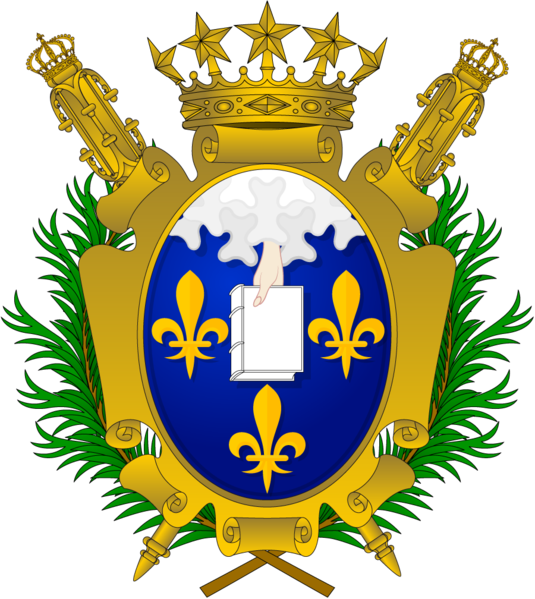
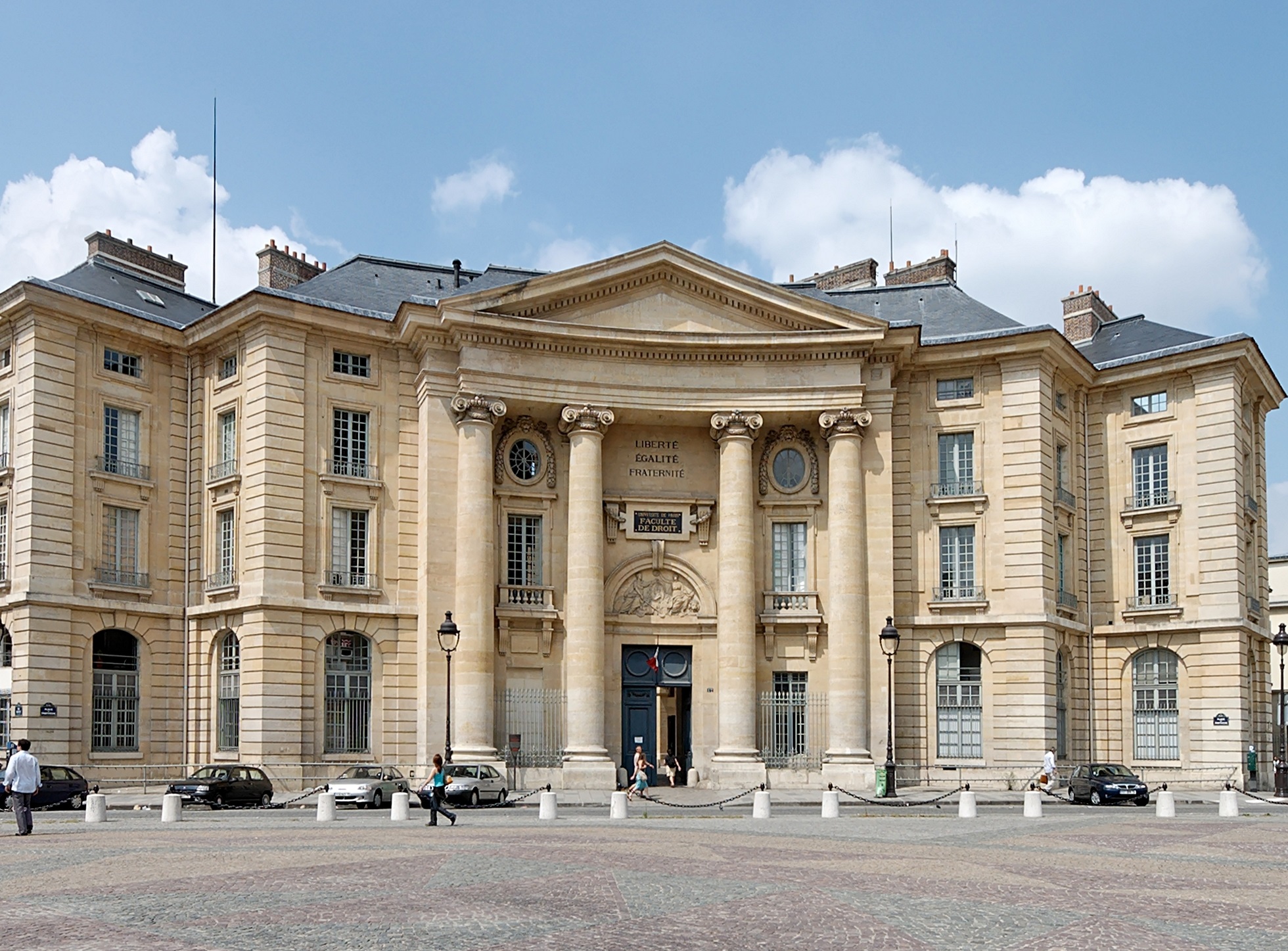
The University of Paris (French: Université de Paris), metonymically known as the Sorbonne (French: [sɔʁbɔn], one of its buildings), was a university in Paris, France, from around 1150 to 1793, and from 1806 to 1970.
パリ大学(仏:Université de Paris)は、かつてフランス共和国のパリに存在した大学。1970年に、パリ、クレテイユおよびヴェルサイユの3大学区にある13の大学に分割された[1]。これらの大学では、多くのノーベル賞受賞者を送り出している他、法学、政治学、科学、物理学、神学などの分野で優秀な学者を輩出している。また芸術の教育機関としても名高い。
Emerging around 1150 as a corporation associated with the cathedral school of Notre Dame de Paris, it was considered the second-oldest university in Europe.[1] Officially chartered in 1200 by King Philip II (Philippe-Auguste) of France and recognised in 1215 by Pope Innocent III, it was later often nicknamed after its theological College of Sorbonne founded by Robert de Sorbon and chartered by French King Saint Louis around 1257.[citation needed]
Internationally highly reputed for its academic performance in the humanities ever since the Middle Ages – notably in theology and philosophy – it introduced several academic standards and traditions that have endured ever since and spread internationally, such as doctoral degrees and student nations. Vast numbers of popes, scientists, intellectuals and royalty were educated at the University of Paris. A few of the Colleges of the time are still visible close to Pantheon and Luxembourg Gardens : College des Bernardins (18, rue de Poissy 75005), Hotel de Cluny (6, Place Paul Painleve 75005), College Sainte Barbe (4, rue Valette 75005), College d'Harcourt (44 Boulevard Saint-Michel 75006), Cordeliers (21, Rue Ecole de Medecine 75006). [2]
In 1793, during the French Revolution period, the university was closed and by Item-27 of the Revolutionary Convention, the college endowments and buildings were sold.[3] A new University of France replaced it in 1806 with four independent faculties: the Faculty of Humanities ("Faculté des Lettres"), the Faculty of Law (later including Economics), the Faculty of Science, the Faculty of Medicine and the Faculty of Theology (closed in 1885).
In 1970, following the May 1968 events, the university was divided into 13 autonomous universities. Although all the thirteen universities that resulted of the original University of Paris split can be considered its inheritors, just three universities of the post-1968 universities inherited the name "Sorbonne", as well as its physical location in the Latin Quarter (i.e. Pantheon-Sorbonne University (Paris I); University of Paris III: Sorbonne Nouvelle; and Paris-Sorbonne University (Paris IV).[4][5][6][7]
From 2010, several of the University of Paris successors started to reorganise themselves into different groups of universities and institutions (COMUE), that, later, were upgraded to "pôles de recherche et d'enseignement supérieur". As a result, various university groups exist in the Paris area, among them Sorbonne Paris Cité, Sorbonne Universities, the University of Paris-Saclay, Paris Lumiéres, Paris-Seine, and so on.[8]
In January 2018, two of the inheritors of the old University of Paris, Paris-Sorbonne University and Pierre and Marie Curie University, merged into a single university called Sorbonne University.[9][10][11]
In 2019, two other inheritors of the University of Paris, namely Paris Diderot University and Paris Descartes University, are also expected to merge.[12]
L'Università di Parigi, conosciuta anche come la Sorbona, fu fondata nel 1170 circa. Fu riconosciuta dal Re Filippo II di Francia nel 1200 e dal papa Innocenzo III nel 1215 (in particolare, dal suo legato pontificio Roberto di Courçon). Soppressa nel 1793 all'indomani della Rivoluzione Francese, fu rifondata nel 1896.
Dal 1º gennaio 2018, con la fusione dei due atenei Paris-Sorbonne e Università Pierre e Marie Curie, è stata istituita un'unica università denominata Sorbonne Université[1][2]
La Universidad de París (en francés: Université de Paris), también conocida como La Sorbona, fue una de las universidades medievales más antiguas y más importantes. Fue fundada a mediados del siglo XII por el obispo de la ciudad y sus instalaciones se situaron cerca de la Catedral Notre Dame de París. En 1200 fue reconocida por el rey Felipe II y en 1215 por el papa Inocencio III. Adquirió rápidamente un gran prestigio, especialmente en filosofía y teología. Se constituyó como asociación de todos los colegios preexistentes en la ciudad de París situados a la orilla izquierda del río Sena (entre ellos La Sorbona, fundado en el año 1215 y con gran prestigio durante la Edad Media debido a su facultad de teología, cuyo nombre se asociaría posteriormente a toda la universidad). Su objetivo era formar a los funcionarios de la administración real (Consejo de Estado, parlamentos, tribunales, hacienda, etc.) y de instituciones eclesiásticas (profesores, médicos, bibliotecarios, obispos, abades, etc.).
Durante la Edad Moderna sufrió una situación de declive. En 1793 fue cerrada y sustituida por escuelas superiores especializadas en derecho, medicina, ingeniería, escuelas normales, etc. Un siglo más tarde, en 1896, se reabrió con cuatro facultades: Derecho, Medicina, Letras y Ciencias.
Tras los sucesos de mayo de 1968 y las reformas de 1968-1971 la universidad se dividió en trece universidades independientes, algunas de ellas multidisciplinares y otras especializadas en determinados ámbitos del conocimiento.
Парижский университет (фр. Université de Paris) — французский университет в Париже, один из старейших в мире; основан в середине XII века; будучи интернациональным образовательным учреждением, очень скоро заслужил европейскую репутацию. Его центром является здание Сорбонны в Латинском квартале на левом берегу Сены.
Как полудуховное общество магистров (преподавателей), подчинённое духовной власти, Парижский университет представлял полный контраст со светскими, республиканскими университетами североитальянских городов; в качестве основного образования (Studium generale) он был, главным образом, высшей школой богословия и свободных искусств, включал в свои программы юриспруденцию только в виде канонического права, а в медицине уступал первенство другим studia generalia.
Став величайшей школой всей Западной Европы, имея среди своих учеников и учителей представителей всех наций и величайших учёных средневековья — Фому Аквинского, Альберта Великого, Раймунда Луллия, Роджера Бэкона, Дунса Скота, Уильяма Оккама, — университет стал высшим авторитетом в вопросах веры и разума и во время падения папства, в эпоху великого раскола, в лице Д’Альи, Герсона и Клеманжи был руководителем католической церкви и сделал попытку реформировать её во главе и членах.
После майских событий 1968 года был преобразован в 1970 году в 13 парижских независимых университетов.
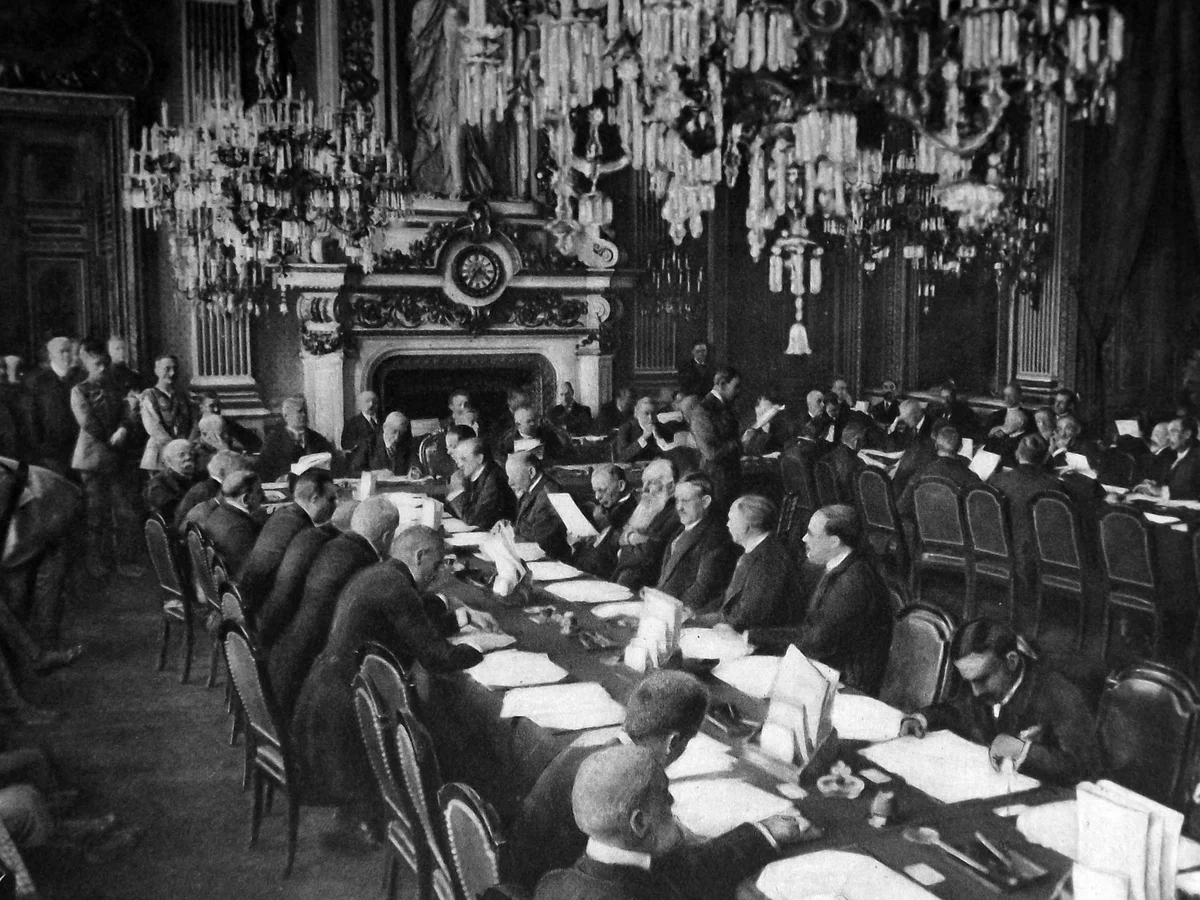

1918年11月,第一次世界大战宣告结束。1919年1月,胜利的协约国集团为了解决战争所造成的问题,以及奠定战后的和平,于是召开巴黎和会。这个和会因为战败国和中立国均未获邀请参加,所以这是胜利国举行的和会,而胜利国又有大小之分别,它又是个大国操纵的和会。分别由法国总理克里孟梭、英国首相大卫·劳合·乔治、美国总统威尔逊主导了和会的进行[参1]。
和会上签订了处置战败国德国的凡尔赛和约,同时还分别同德国的盟国奥地利、匈牙利、土耳其等国签订了一系列和约。这些和约和凡尔赛和约一起构成了凡尔赛体系,确立了一次大战后由法国、英国、美国等主要战胜国主导的国际政治格局。会议通过领土分配及赔款等措施重塑现实政治格局,遏制德国等战败国及苏维埃俄国等共产国家,但与此同时通过筹组一个国际联盟来企图建立理想的国际外交规范。
参加巴黎和会的各国代表有1000多人,其中全权代表70人。和会及后续的活动先后完成对各战败国的和约,其中对德和约的凡尔赛条约是最为重要的条约,对日后的国际关系有着深远影响。
Die Pariser Friedenskonferenz fand vom 18. Januar 1919 bis zum 21. Januar 1920 zwischen den Siegern des Ersten Weltkriegs unter Ausschluss der Besiegten statt. Sie hatte das Ziel, einen Friedensvertrag mit Deutschland und seinen Verbündeten zu erarbeiten. Ihr Ergebnis waren die Pariser Vorortverträge, darunter auch der Friedensvertrag von Versailles.

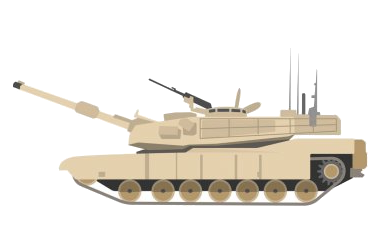

 军事、国防和装备
军事、国防和装备
 文化遗产
文化遗产

 艺术
艺术
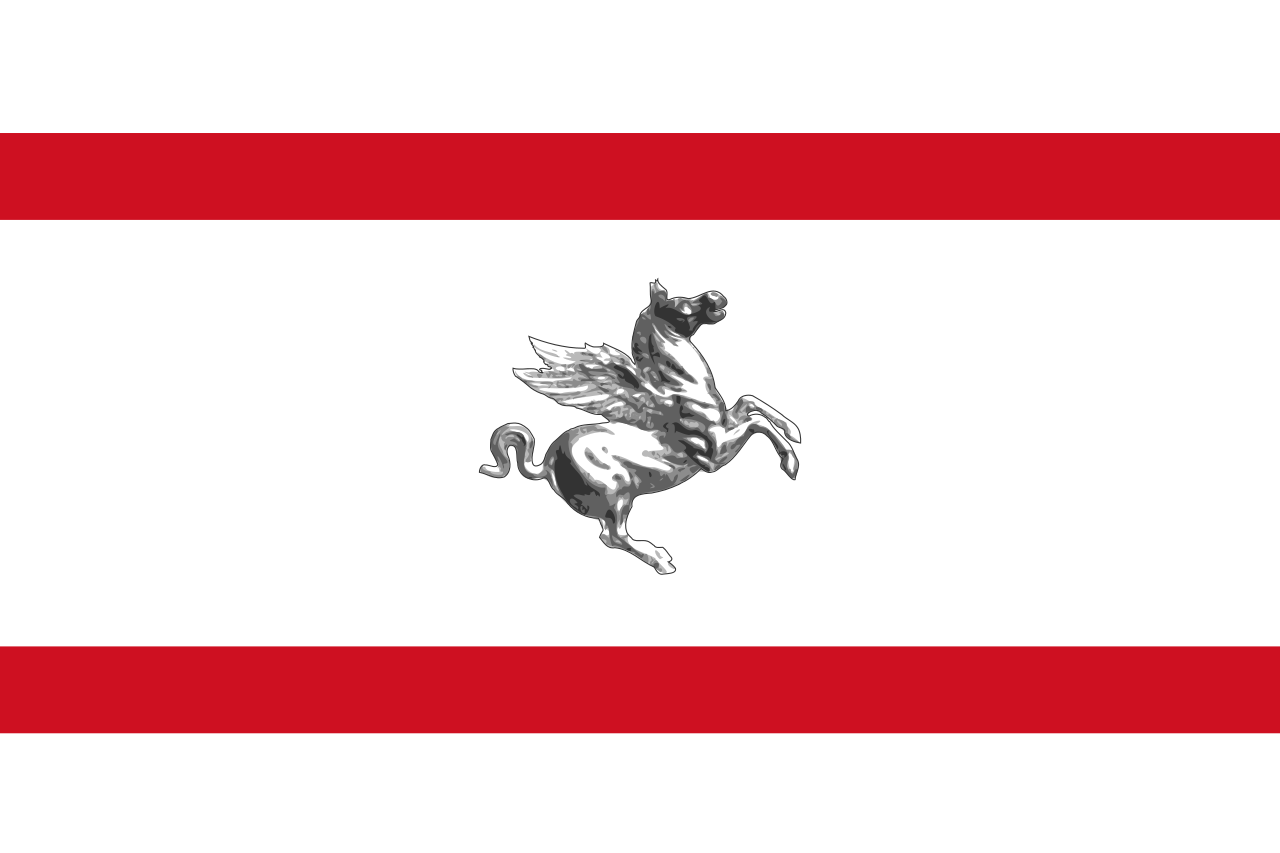 托斯卡纳大区
托斯卡纳大区

 文明
文明
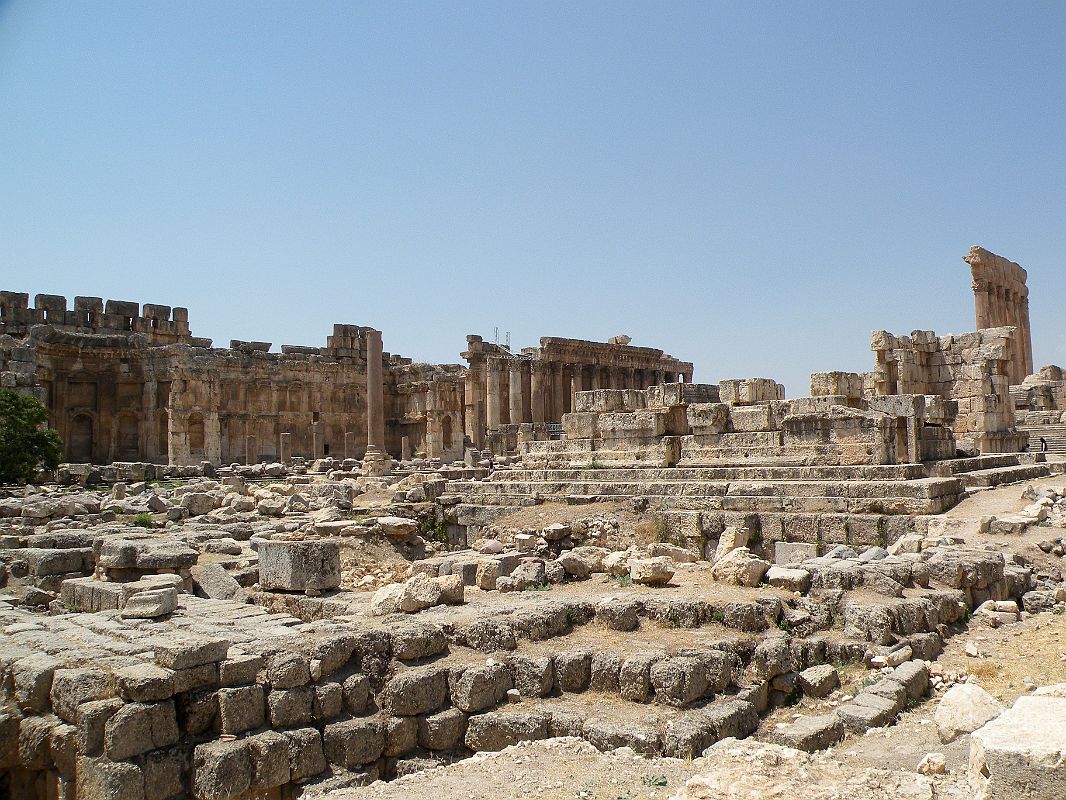
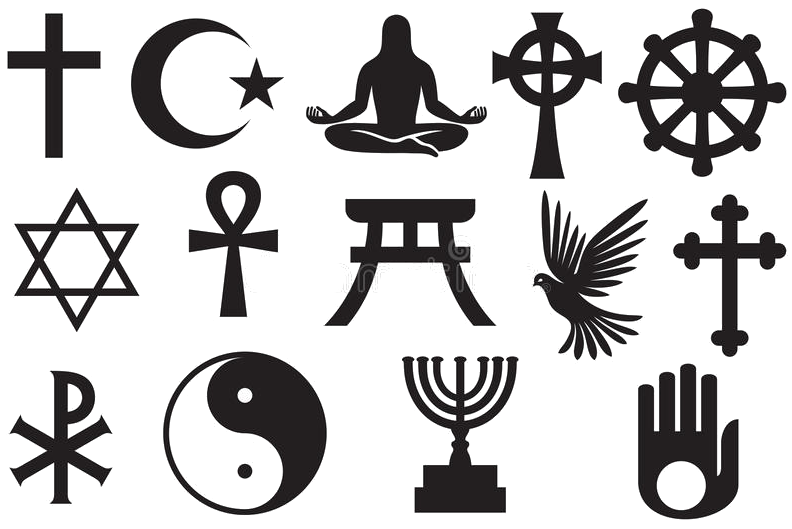 宗教
宗教
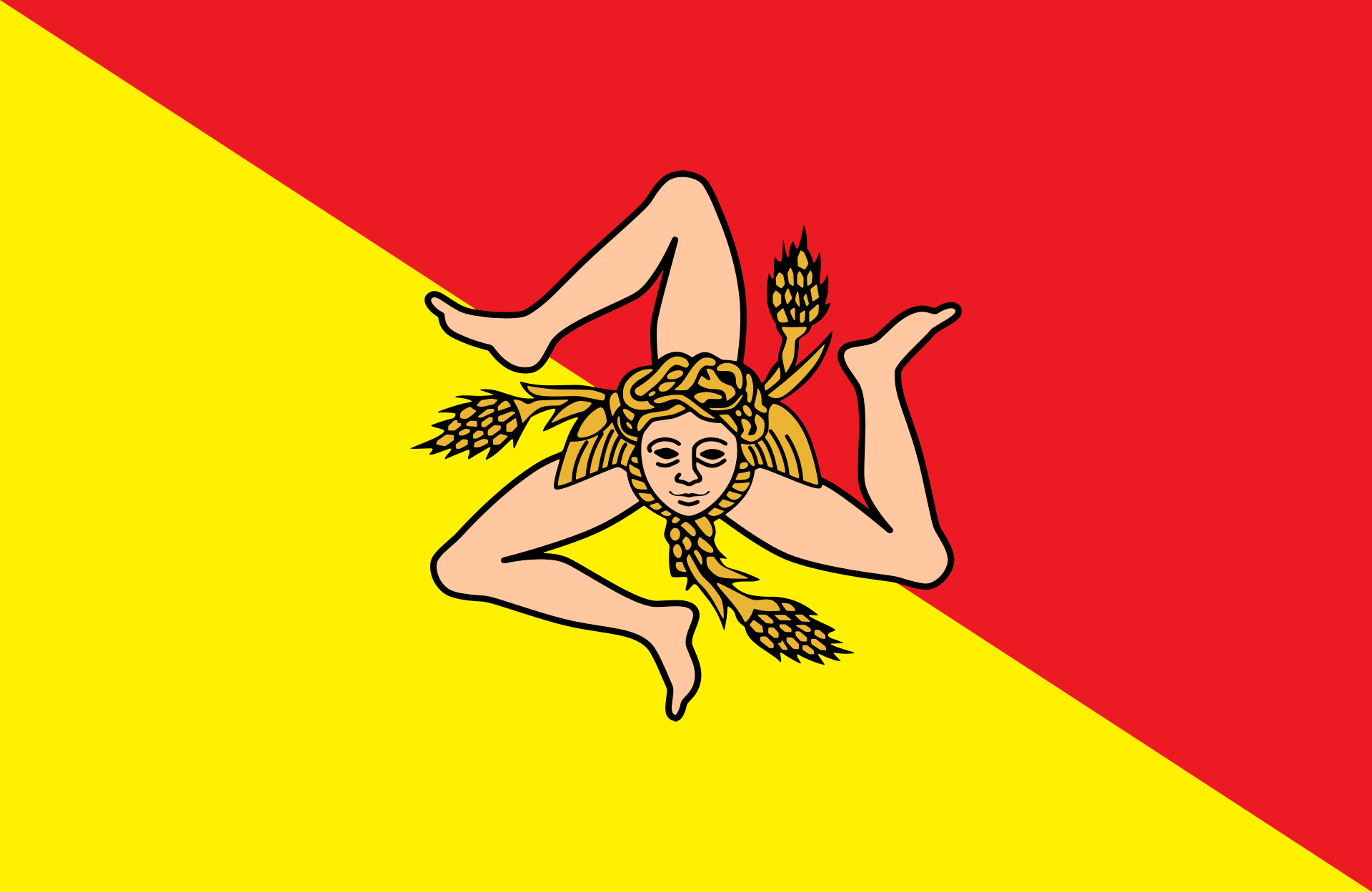 西西里大区
西西里大区

